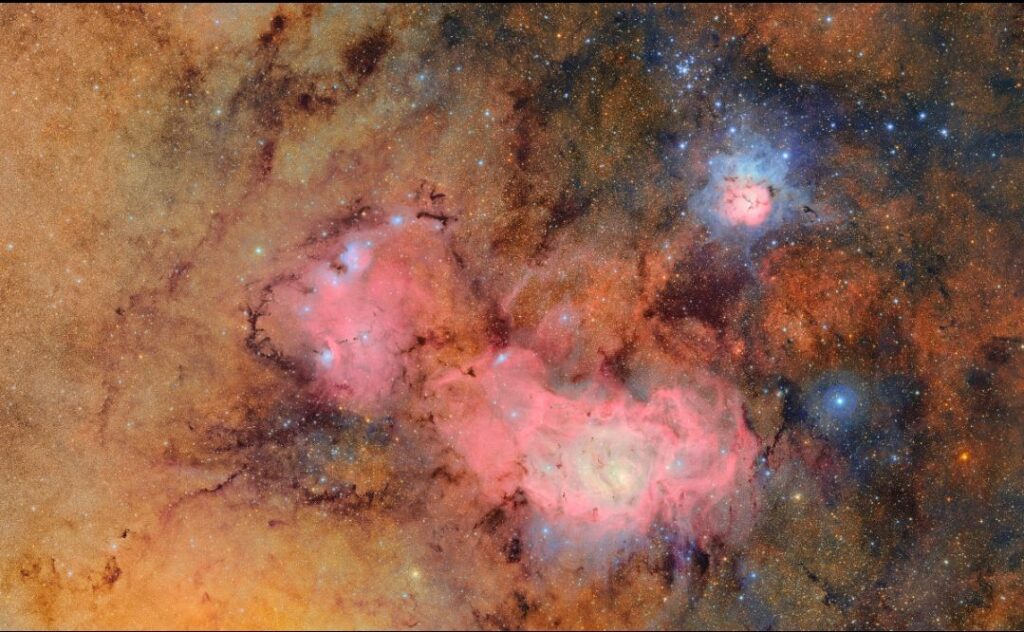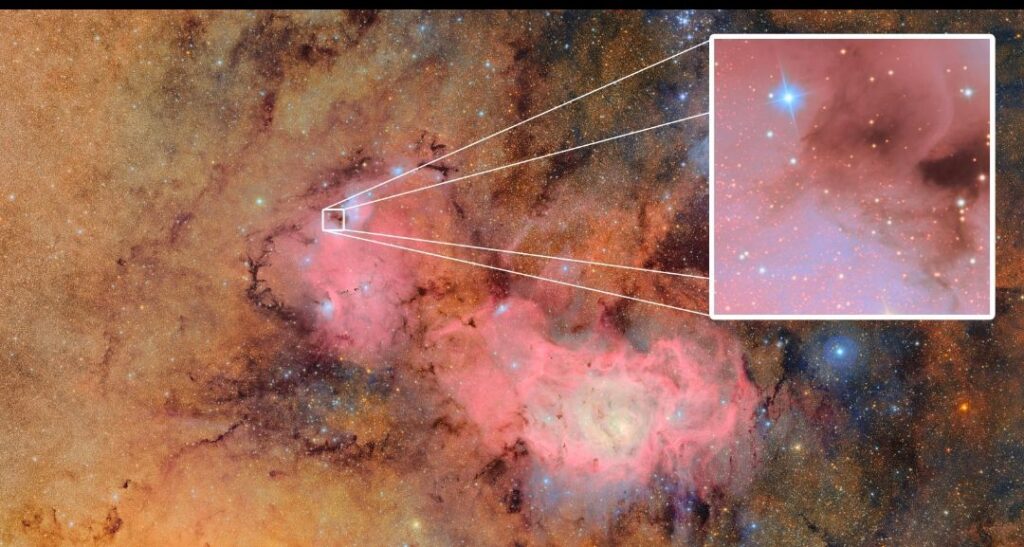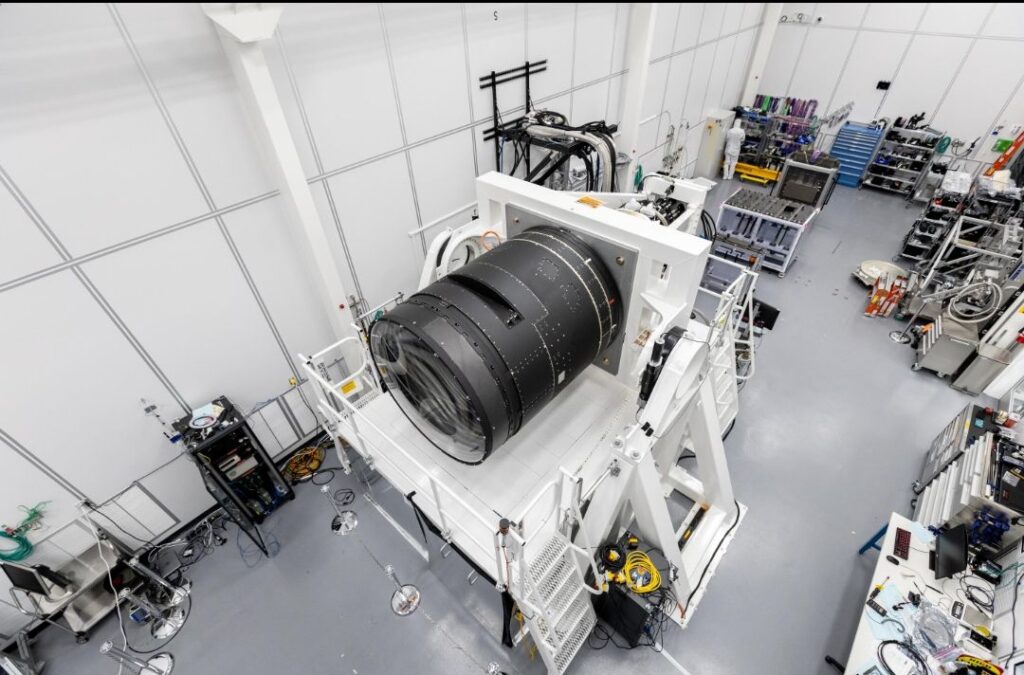Installed at Vera C. Rubin Observatory, Chile

Camera Name: LSST (Legacy Survey of Space and Time)
Resolution: 3.2 Gigapixels
A Giant Leap for Astronomy
The world’s largest digital camera — about the size of a small car and tipping the scales at over 3 tons — has just taken its very first images of deep space. This incredible camera is the centerpiece of the Vera C. Rubin Observatory, which is nestled high up in the Andes Mountains of Chile.
Get ready to be amazed! The first stunning images from the LSST camera have just been released after its impressive 10-hour debut test.
Here’s what it captured:
– The Trifid Nebula
– The Lagoon Nebula
– The Virgo Galaxy Cluster
These breathtaking images showcase over 10 million stars and galaxies, giving us a thrilling glimpse of the incredible discoveries this telescope is set to make in the coming decade.
Credit: Vera Rubin Observatory / SLAC

Mission Goals
The LSST camera isn’t just about capturing stunning images — it’s a scientific marvel built to:
– Track dark matter and dark energy
– Discover near-Earth asteroids
– Detect supernovae in real time
– Create a time-lapse of the universe
In its very first 10 hours, the observatory managed to find over 2,100 new asteroids, including 7 that are near-Earth objects.
WHAT MAKES THIS CAMERAS SO SPECIAL ?
| Feature | Details |
| Camera Size | 3.2 Gigapixel (The Largest ever built ) |
| Primary | 1.57 meters ( largest ever used in a camera ) |
| Nightly Imaging | 1,000 photos per night |
| Sky Coverage | will map the ( entire southern sky every 3-4 night ) |
| Data Production | 20 Terabytes per night |
A Decade of Discovery Ahead
Starting in late 2025, the LSST camera will kick off its ambitious 10-year Legacy Survey of Space and Time. The aim? To create the most comprehensive and detailed 3D map of the universe that anyone has ever tried to make.
“This is not just a camera — it’s the most ambitious astronomical project of the decade.”
— Dr. Aaron Roodman, SLAC

Quick Facts
Built by: SLAC National Accelerator Lab (USA) + NOIRLab
Location: Cerro Pachón, Chile
Operation: Every night for 10 years
Data Distribution: Real-time access for scientists & public
- Massive ‘Free America’ protests take place across US on July 4: New wave of resistance against Trump rises across countryIndependence Day: A Day of Defiance, Not Just Celebration. On a day that’s usually all about fireworks and celebrating freedom, millions of Americans took to the streets on July 4, 2025, but this time, it was to protest. Under the banner of the “Free America” movement, which was organized by Women’s March, MoveOn, and various …
- America At The Crossroads: On Its 249th Independence Day, Where Is The Nation Headed?On July 4, 2025, as fireworks light up the night sky, Americans take a moment not just to celebrate their independence but to reflect on their country’s future. In 1776, the United States became free from British rule. Fast forward to today, many are wondering: What are we free from now — and are we …
- 🔴 LIVE | Trump’s one big beautiful bill: $4.5T tax cut, +$3T deficit, millions in risk coverage”Trump’s “One Big Beautiful Bill” Passes: Massive Tax Cuts, Soaring Deficit, and Deep Spending Cuts Washington, D.C. — July 3, 2025 In a dramatic legislative win just in time for Independence Day, the House of Representatives has approved President Donald Trump’s ambitious domestic agenda, known as the “One Big Beautiful Bill.” The final tally was …
- Trump vs Musk: Billionaires’ battle over subsidies turns into political stormFirst of all, look at what happened today between Elon and Trump. Trump vs Elon Musk Feud Erupts Again Over Federal Subsidies and GOP Mega Bill Tesla’s stock takes a nosedive as political tensions make their way onto social media. WASHINGTON, D.C. — July 1, 2025: Today, President Donald Trump and tech billionaire Elon Musk …
- Adult film star and Netflix personality Kylie Page dies in Los Angeles at 28LOS ANGELES, Today The adult film industry is mourning the loss of Kylie Paige, known off-screen as Kylie Pylant, who tragically passed away at just 28 years old. The talented actress, originally from Texas, was found unconscious in her Los Angeles home on June 25. Her untimely death has shocked fans, friends and the entire …